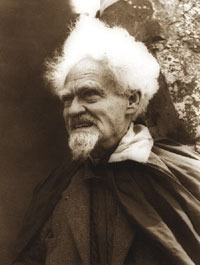What about pagans?
 I've been thinking about the history behind the central motif in The Burning Times, which is that some sort of authentic pagan religion survives into 17th century Europe and is the reality behind the 'witch scare' that the Christian establishment is conducting.
I've been thinking about the history behind the central motif in The Burning Times, which is that some sort of authentic pagan religion survives into 17th century Europe and is the reality behind the 'witch scare' that the Christian establishment is conducting.The idea isn't mine. It was famously prompted by the 20th century anthropologist Margaret Murray and her follower Gerald Gardner. Murray pitched the idea of a 'European Witch Cult' with its roots in Norse ad Celtic paganism that had survived, through folk practices and oral transmission, right through the Middle Ages, despite the best attempts of the Christian authorities to stamp it out. In Murray's analysis, many of the 'wise women' and 'cunning men' that villages in rural areas depended on for physicians, midwives and spiritual counselors were in fact the direct descendants of Druids and Galdors, preaching an earth-based religion and secretly worshipping an immanent Mother Goddess as an alternative to the Church's transcendent Father God.
Gardner took this idea a bit further. He suggested that the Goddess-cult was deliberately targeted by the Church as part of a sort of spiritual land-grab. Without the wise women and their ilk, you see, the peasants would come running to the church for doctors, educators and comforters. So the "Burning Times" (Gardner's word for the three centuries of intensive witch hunting from the 1500s onward) were really a smoke screen. The Church wasn't hunting devil-worshipping witches - and the church leaders knew it! - no, the Church was wiping out a rival religion. Garner is known as the 'Father of Wicca' and his analysis is dear to the hearts of many modern day pagans.
Is it true, though?
Published on February 25, 2014 02:27
No comments have been added yet.



